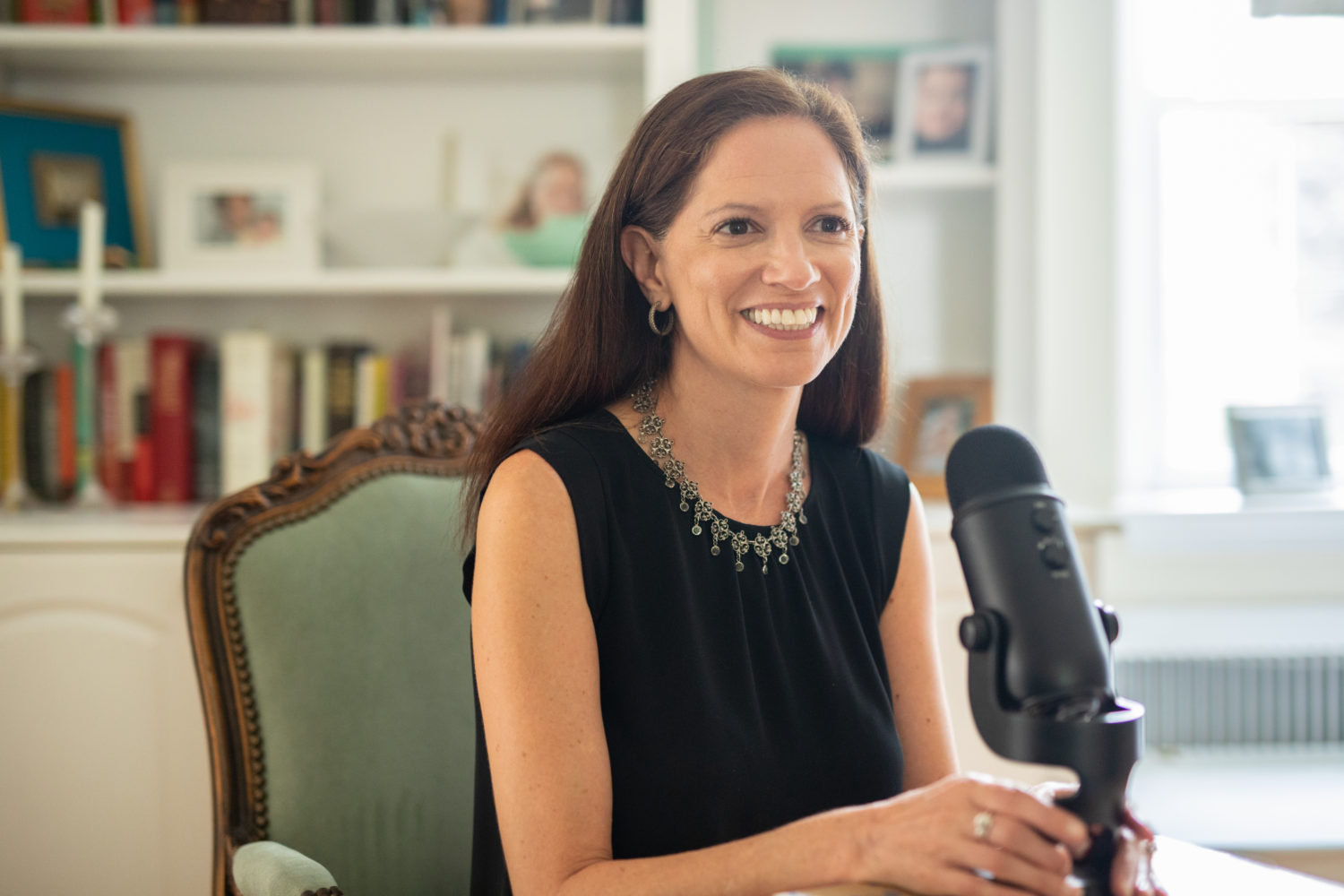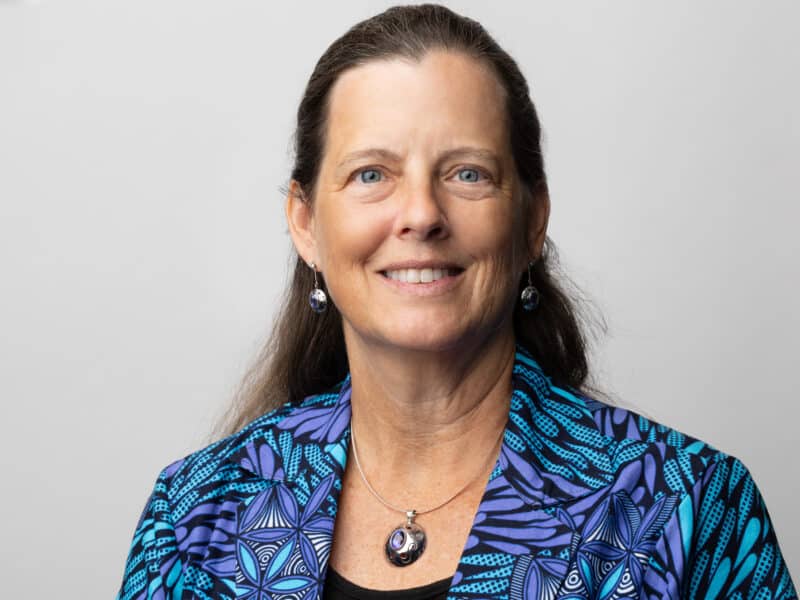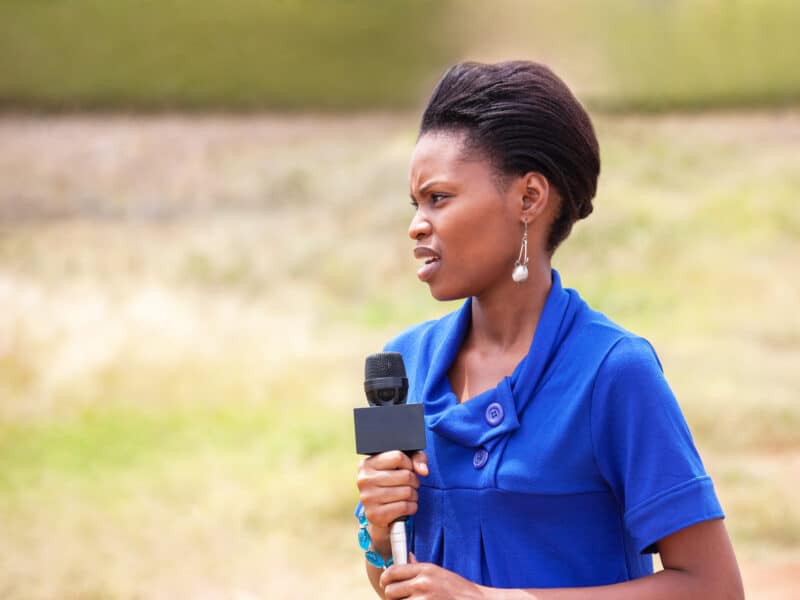The Public Health On Call podcast, hosted by Josh Sharfstein and Stephanie Desmon and produced by Lindsay Smith Rogers, has been a prolific source of invaluable information since the beginning of the COVID-19 pandemic when reliable knowledge was still scarce. With five million listens, more than 340 episodes, and most recently, a CASE award, the podcast has covered topics ranging from what we know about how the virus spreads, vaccines, the importance of effective communication, local and international responses, school closures and reopenings, mental health and race, all in conversational ways that give listeners access to experts as the world figures out how to respond to COVID. CCP’s Nicole Jurmo recently sat down with Stephanie Desmon, who in addition to her role as co-host on the podcast serves as the director of PR and marketing at CCP, to talk about her experience.
Nicole Jurmo: It seemed like Public Health On Call became a lot of people’s go-to source of information about the pandemic overnight. Where did the original idea come from, what was the goal and why was a podcast the best format?
Stephanie Desmon: In the early stages of the pandemic, Josh Sharfstein – a vice dean at the Johns Hopkins Bloomberg School of Public Health – had a ton of questions and was finding that people at the school had answers. He was being approached by the media and elected officials and then chasing down information from virologists, epidemiologists, clinicians and others at the school. He was recording all these conversations and, since he’s also a big consumer of podcasts himself, he thought, “These conversations are so interesting, maybe we should have a podcast.” Soon after, Josh called me and asked me to be his co-host. I admit that, in early March 2020, the idea that we would have enough content for a daily COVID-19 podcast seemed ridiculous. Obviously, I was proven wrong. Since then, with the leadership of producer Lindsay Smith Rogers, and a team of sound editors, social media experts and a project coordinator, we have released more than 340 episodes. It’s hard to believe what it has become.
NJ: How important was it to be able to communicate to an audience that didn’t have a public health background? What were some of the challenges you faced with that?
SD: In the beginning, one huge challenge was trying to understand what people were really asking when they sent in questions for us to answer on the podcast. A lot of the time, they had read something on Facebook or Twitter and were asking us to debunk misinformation. But often it was just regular people being really scared for their own safety and wanting to know, for example, if they could have gotten COVID-19 from a fleeting encounter, or from their own groceries. It was also difficult to try to explain what we knew about a brand-new virus in a way that would help people understand the severity of the situation, while at the same time helping them understand that there were things they could do to protect themselves and stay safe. You’re doing all of this while at the same time introducing some people to the concepts of virology, epidemiology and infectious diseases for the first time. It’s a delicate balance.
NJ: Your background is as a journalist. This podcast gave you a chance to tap into that again. What did you feel like your journalistic responsibility was with the podcast in the context of the pandemic? Did your work at CCP in social and behavior change shape the way that you approached the podcast?
SD: I have relished this opportunity to be a journalist again after more than a decade out of the business: To be able to ask probing questions about topics of great importance to huge swaths of the world and to share what I learn with the public. It was gratifying for me to be able to ensure that, with so many conspiracy theories and so much misinformation out there, we could be a source of trusted information for our loyal listeners. I try to make my podcasts “news you can use” for people who don’t know what or who to believe, and I try to ensure that our scientific and academic experts relay information in language that other lay people like myself can truly grasp.
And this idea of having trusted communicators convey messages in easy-to-understand language during an emergency is something I have come to appreciate even more during my four years at CCP. This type of communication is vital to helping people understand their roles in a crisis – including what behaviors people need to adopt to do their part in curbing the spread of a disease that has killed more than four million across the globe. If our podcast convinced just one person to wear a mask or gave them the confidence to get a COVID-19 vaccine, then we have done a public service.
NJ: Misinformation has been its own huge challenge during the pandemic. You obviously were doing what you could to combat misinformation with the podcast. What lessons from the podcast experience do you think can be applied to future outbreaks?
SD: It’s a huge challenge and I like that we were able to be part of the solution. We wanted to make this a conversation – not just between me and Josh and the experts we interviewed – but with our global listenership. We established a listening mechanism – an email address where people could write to us, sharing their fears and the rumors they were hearing. We also monitored social media for questions and comments. We made sure that the podcast was as responsive as it could be to our listeners’ concerns, while at the same time sharing information that people needed to know and may not have known to ask about. Remember, just like everyone else, we have been learning new things every day, especially during the early days of the pandemic. We thought the virus was transmitted on surfaces and then came to understand it was airborne. We didn’t know there could be asymptomatic cases and then we understood that a large number of infections are asymptomatic. First, the advice was not to wear masks and then, it was to always wear masks and now it’s something in between. Providing the best information we have at a given moment of time is key to dispelling a lot of the misconceptions out there.
NJ: You have spoken to so many experts. What are some of your favorite moments? Guests who surprised you or made you really rethink assumptions?
SD: It’s very hard to pick favorites. I will say that I think our listeners are always well-served when I interview my co-host. Josh Sharfstein has led a distinguished career in public health. He’s a pediatrician who has led both the Baltimore and Maryland health departments as well as serving as one of the top officials at the FDA under President Obama. I cherish the opportunity to pick his brain and ask him tough questions.
There are many others who were great to talk to including Brown University economist Emily Oster, Michael Osterholm, an infectious diseases expert from Minnesota, and Jim Golen, a man who got sick with COVID-19 in early 2020 who told us months later about his ongoing suffering as a COVID long-hauler. I’m not sure how I was able to get through that one without crying. I also spoke with people about the eviction crisis, about women and the workforce during the pandemic, with college and university leaders about their COVID concerns and actions, about using human waste to track COVID spread – and so much more.
I particularly love interviewing Keri Althoff and Elizabeth Stuart, two amazing Hopkins professors and regular guests who have been willing to share their lessons learned about children in this very difficult year. Their optimism and advice is always valuable, especially when I was feeling down about the very real phenomenon of COVID fatigue this past winter.
NJ: What’s next for the podcast?
SD: COVID-19 is still very much a crisis and we’ll continue to follow the stories and research updates. But there are many other urgent public health issues that could use the “COVID treatment.” Climate change is a critical one, so is mental health. Racism and health equity, too. Other potential emerging zoonotic diseases could become the next epidemic or pandemic. Public health is pretty silent when it’s successful, and we want to make sure people understand that the work never stops. We have to invest in public health infrastructure. We will never run out of things to talk about in public health, even if COVID-19 should become a thing of the past.





